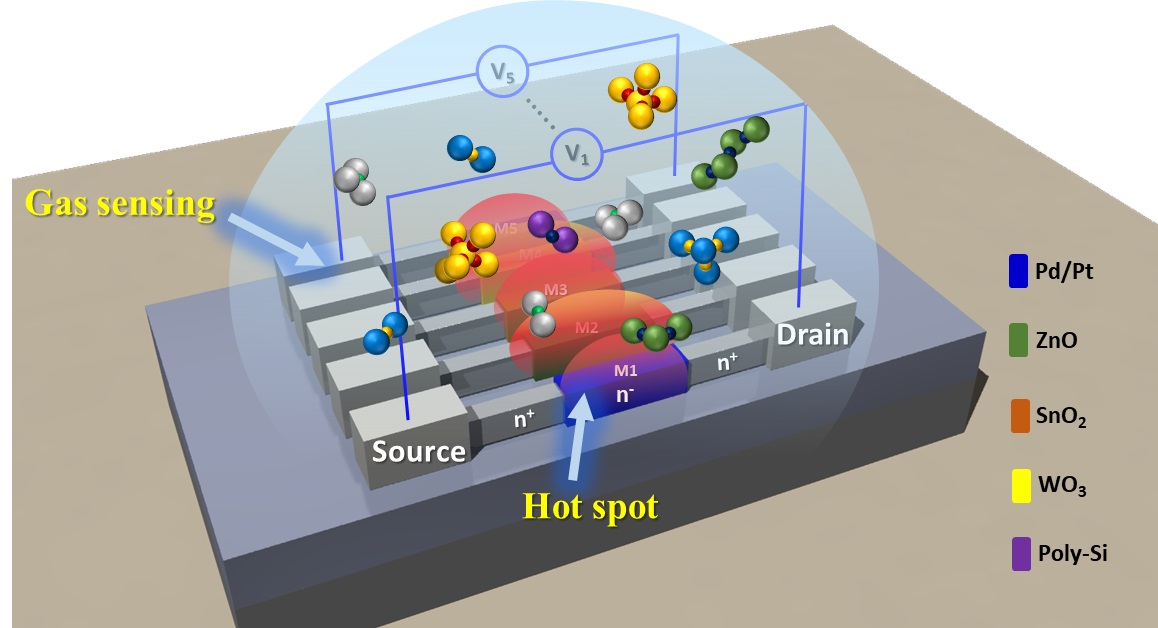| Technical Name | Intelligent E-nose with Joule Self-heating Nanodevice Array | ||
|---|---|---|---|
| Project Operator | National Chiao Tung University | ||
| Project Host | 許千樹 | ||
| Summary | This technique provides selective deposition of noble metals and metal oxide semiconductors on n- region of double-junction nanodevices via device localized Joule heating and plasma-enhanced atomic layer deposition (PEALD). This invention relieves the complex process steps previously required for the selective deposition of sensing materials on the surface individual nanodevices. The region of selective deposition is also the most sensitive region. In gas sensing, individual nanodevice is functioned under Joule heating so that the surface temperature of each device is raised to the optimum reaction temperature to optimize the gas sensing. Compared to traditional device, with very small heat mass, device under Joule self-heating reduces 1000 times of the power required. Array of sensing devices provides multi-dimensional gas sensing responses, which is suitable for intelligent recognition and can solve the problems in specificity and sensitivity encountered by traditional gas sensor. |
||
| Scientific Breakthrough | The fabrication and structure of this gas sensing chip is a breakthrough compared to traditional gas sensing device fabrication, which involves a complex process steps for selective deposition of different material sensing materials on the same chip. On the other hand, in gas sensing, individual nanodevice also work utilizes device localized Joule heating to raise the surface temperature of each device to the optimal reaction temperature. As a result, the power consumption is reduced to several microW/device, which is a 1000 times lower than the power consumption of traditional gas sensing device (> 25 mW/device). The array-type gas response is also suitable for AI analysis, therefore, improving in detection specificity and sensitivity can be easily achieved. |
||
| Industrial Applicability | 1. This technology is suitable for a wide range of gas sensing applications especially in the fields of environmental gas sensing, industry gas sensing and disease breath detection. |
||
| Keyword | low power consumption gas sensing nanoelectronic device gas sensing array device localized Joule heating atomic layer deposition smart gas sensing artificial intelligence | ||
- jtsheu@faculty.nctu.edu.tw
other people also saw







